If ever there was a topic to avoid discussing with audiophiles, it would be the question of whether high-end cables improve sound reproduction. This includes anything from power cords, to headphone cables, and every wire in between. Cable discussions, all too often, cascade into very passionate for-and-against arguments.
Typically, the arguments would get stuck in a loop, similar to the one below:
Please note that this article will focus primarily on analog headphone cables (and extension cables), rather than digital connections (such as USB or Lightning). With that said, wireless Bluetooth headphones will only be impacted when connected with an optional analog detachable cable.
Claimed Improvements in Expensive Cables
I think it is important to note that ‘expensive’ doesn’t necessarily mean ‘high-end’. Cost (perhaps) should be an indicator of the quality of the cable’s materials and design, but it doesn’t always perfectly align. It is certainly possible to create high-end cables, with the use of premium materials at minimal cost – just ask a Do-It-Yourself-er. It is often impossible to find out if expensive cables are indeed constructed from high-end materials. That is, unless you destroy the cable as the materials used and construction of it are typically hidden underneath the outer sheath.
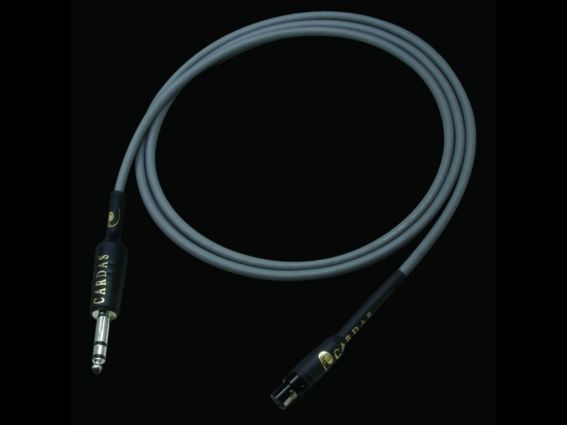
Have you ever read an audio review that described improvements in ways such as “better micro-details”, “has no skin effect” or that the sound is “smoothly textured”? Much of the cable debate revolves around these sorts of tenuous descriptions of sound, which by their very nature, are extremely difficult to prove or disprove.

When describing how headphones perform, most readers generally understand what “extended treble” or “lack of deep bass” sound like. These results are clearly visible using measurement tools.
However, when describing the source or amplifier, the terms get hazier with descriptions like “grainy”, “shallow”, “pure”, or “accurate”. Cable performance narratives go further down this obfuscated path, with claims of “detailed”, “musical”, “rich” or “focused”.
Without measurements to support the descriptions, fuel is added to the debate.
Chapter 1: The Spectrum of Belief
Fundamentalism defines a strict devotion to a set of beliefs. The cable debate represents a fundamental impasse between the scientific evidence-based objectivists, and the experience belief-based subjectivists. Putting aside the clear similarities to the classic Religion vs Science debate, we shall hereby refer these two opposing viewpoints as the “Skeptic“ (cables make no difference) and the “Believer” (cable differences are audible) for our discussion.
The Skeptic
It is not as simple as saying that all wires measure the same, and therefore, should sound the same. In fact, the Skeptic is quick to point out that it is quite possible to measure differences between cables, however, they contend that the differences are inaudible. From an academic perspective, a “better” cable may be able to offer an improvement in measurements, but the improvements are so minuscule as to be meaningless in use.
The Skeptic proclaims that they only have confidence based on proven scientific evidence and testing. The most common evidence cited involves the claim that no one has ever passed a proper ABX test of cables.
What is an ABX test?
An ABX test, unlike a simple blind test, is a test whereby the listener has to listen to a total of three samples, i.e. Sample A, Sample B (known samples to the listener) and Sample X (unknown sample to the listener, which is selected at random from either A or B). The listener would then have to identify X as either A or B.

A thread on Head-fi.org entitled Testing Audiophile Claims and Myths does an excellent job of collecting and discussing 50 blind audio tests.
Ugly Side Of The Skeptic
The Skeptic (unfortunately) may present a distinct ‘holier-than-thou’ approach and, habitually, isn’t interested in considering alternative viewpoints. When discussions revolve around someone purchasing expensive cables and reportedly hearing an improvement, these Skeptic may imply that the purchaser has wasted their money and that the differences they hear are solely a result of purchase justification and expectations.
While the Skeptic claims to be objective, many of the discussions are far from impartial, neutral, or dispassionate.
The Believer
On the other side, you have a group of passionate folks who would swear that they are able to hear a difference in sound reproduction between cables. The Believer often exhibits the following traits:
- Having years of experience in the audiophile community;
- Having the skills that are required to analyze the quality of what they hear; and
- Claims that they can tailor cables-and-headphones matching to achieve the sound they desire
However, the Believer can offer no empirical evidence to confirm their beliefs.
Ugly Side Of The Believer
So the question on hand is how does the Believer have so much confidence in the face of ambiguous, subjective and non-measurable results? When challenged, this group tends to be quick to ask what the other side has for playback equipment. If it is not absolutely the top-of-the-line gear, they would then imply (or state) that the equipment simply isn’t good enough to hear an improvement. The Believer tends to roll their eyes at blind testing or analysis, which is supported by the Skeptics. They have faith in what they have experienced and do not want to be persuaded otherwise.
Chapter 2: Why The Cable Debate Gives Audiophiles A Bad Name
Ignoring an individual’s claim that they can hear a change in sound, simply because the listener is unable to provide scientific proof or an easy-to-digest explanation, may be short-sighted. The explanation may be missing, but the experience can still be valid.
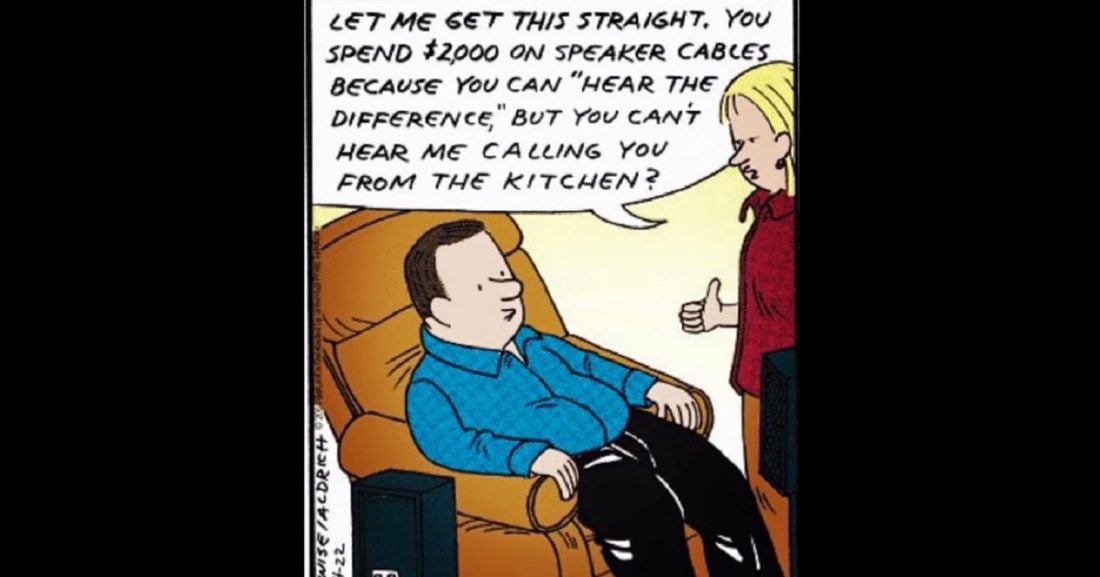
Just because something is currently a scientific practice doesn’t mean it is absolute truth. We use science to predict future events based on past experience, however, science is always evolving to create a more accurate prediction of what is true. Blind and ABX testing are valuable tools used to scientifically test for perceived differences, but testing is only a subset of all the possible scientific methods.
We have to remember that we do not know everything. Hearing perception may be beyond current measurement tools. The probability may be low, but it is possible that we might not even be measuring the right things. Approaching the discussion with patience, rather than with scorn and polarized conclusions, benefits both sides of the debate.
Unfortunately, the poor behaviour, refusal to listen to opposing views, and dismissive sniping so often exhibited by these two groups can give the term “audiophile” a bad reputation.
Chapter 3: Why do Some Listeners Report Hearing Differences Between Cables?
It is important to note that hearing a ‘difference’ does not equate to hearing an ‘improvement’. All too often, any perceived difference is interpreted as improvement in sound, especially when equated with high-end equipment and cables. From the Skeptic point of view, if a cable is designed to function properly, any perceptible change only serves to reduce the functionality to below an acceptable level, and any improvement above the acceptable level is inaudible (even if it is measurable).
Change is not necessarily improvement. Perceiving a difference does not mean it sounds better.
It is possible that the difference heard is attributable to the listener, rather than the cable. If one accepts the blind and ABX testing results, the explanation may be attributed to listener bias (expectation, placebo, purchase justification) or psychoacoustics (the study of the perception of sound). Psychoacoustics studies the ear’s limitations in sensing sound, including:
- Hearing Range – the audible range of frequencies. Typically described as 20-20,000 Hz, although this varies between individuals and high-frequency sensitivity is lost with age.
- Absolute Threshold – the minimum audible sound level of a tone with no other sound present.
- Masking – the perception of one sound is affected by the presence of another sound.
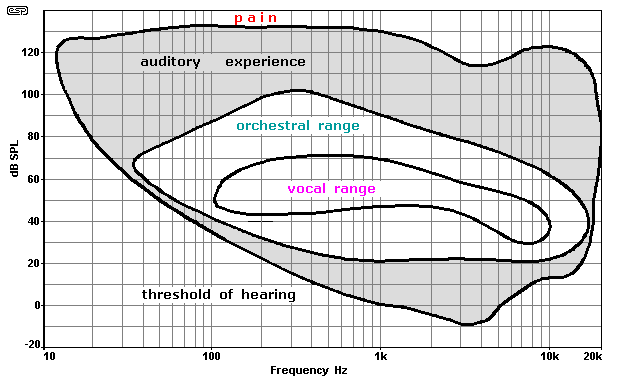
Listening is a complex process. Our brains discard much of the sensory input, and use pattern matching, memories and experiences to interpret the huge amount of information received. This is not an infallible process and our brains can be fooled into hearing (or seeing) things that are an illusion. One famous example is the McGurk Effect.
The Perception of Sound
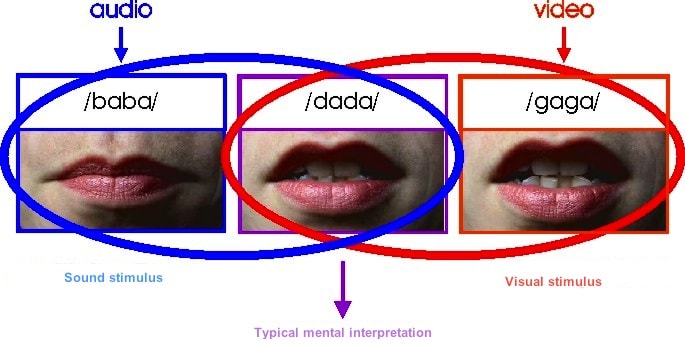
This McGurk Effect video from the BBC explores when the visual cues of speech do not match what you hear. The brain prioritizes the visual cues over the auditory input and you would hear a different sound than the one being played. Regardless if it is completely applicable to perceived cable sound changes or not, it is a fascinating phenomenon, and I would recommend you to watch the link above.
“You can’t always trust what you hear. Sometimes, your sense of vision takes over, enabling us to maintain a coherent view of the world.”
– BBC Two
A listener may indeed sense a difference due to how our brains perceive sound (and music), which is more than simply hearing. What the listener experiences is an amalgam of all their senses, emotions and experiences. This explains the unconscious preconceptions a listener brings to a listening test, or to a swap of cables.
All in the mind
It impacts how everyone perceives music and why two individuals can listen to the exact same equipment and report different findings. This could also apply to how a single individual listening at a different time or location can experience different results. There is no dishonesty or deception involved, it truly is “all in the mind“. Unconscious belief is enough for the listener to hear or to not hear a difference.
Audio Illusions: Yanny or Laurel
A couple of audio illusions are making the rounds on social media. Do you hear Yanny or Laurel? How about Brainstorm or Green Needle?
In a recent Telegraph interview with Valerie Hazan, she explained why we could hear different things when listening to the same sounds:
There are several good reasons that could substantiate the Believers’ claims in being able to hear a difference between two cables, i.e.:
- It is reasonable to expect a difference as many credible people have reported hearing differences
- The listener may have heard a difference between cables in the past
- The listener may have experience and training on discerning small audible differences
- The listener may not have discarded the Skeptic’s point of view, but believes current testing methodology is not enough to explain the audible differences
Expectation Bias
Expectation bias is often mentioned when talking about the Believer. However, it works both ways. The Believer may expect that a more expensive cable will sound better, and the Skeptic may expect that all cables will sound the same. These expectations lead each group to hear “improvements” or “no difference at all”, depending on their bias, and to dismiss anything that doesn’t fit their own expectations.
We’ve covered what may not be real, so let’s move on to the facts. What’s inside headphone cables?
Chapter 4: Anatomy of a Headphone Cable
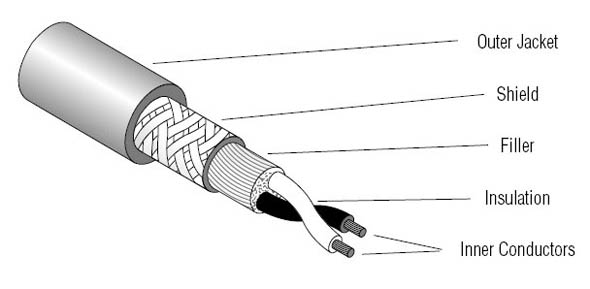
Headphone cables vary greatly in how they are made and the types of materials used. In essence, there are two wire conductors per headphone driver, which is surrounded by an insulator and terminating into a headphone jack at the end. On the headphone cup side, there may be additional termination jacks, or the wires may enter the cup and be soldered directly to the driver.
There is an inexhaustible amount of opinions about the impact on sound quality of every aspect of cable construction and materials. The type of metal, properties of the insulation, shape/size/braid of the conductors, type of solder, etc. are all widely debated! With this many variables, it is no wonder that there is no clear consensus on the best headphone cable.
Headphone cable construction also includes the physical aspects of durability and usability. In general, this encompasses::
- Pliancy – the flexibility of the cable; how easily it bends.
- Strain Relief – the transition from the cable to the rigid connector – intended to prevent load applied to the cable from being transferred to the connection.
- Memory Retention – the cable retains its shape when manipulated.
- Microphonics – sound transferred to the headphone from touching or manipulating the cable.
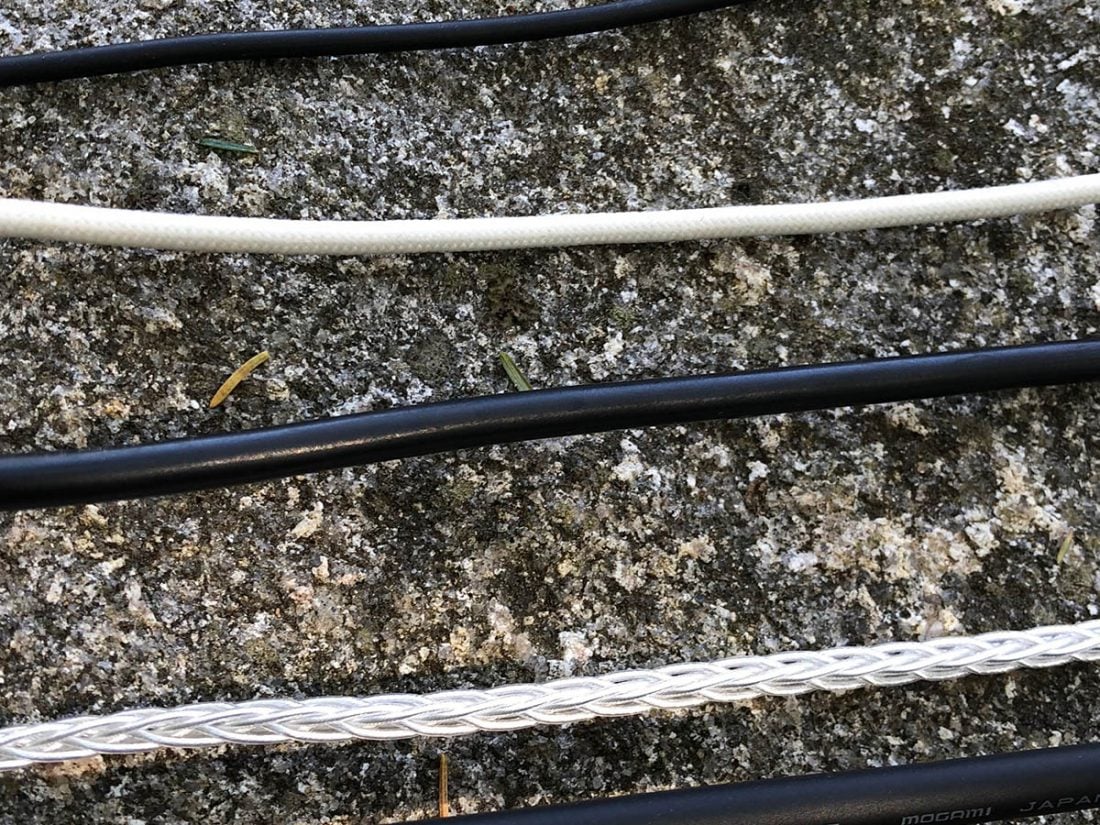
Cable Materials
Headphone cables and jacks are made from materials such as copper, silver, gold, or rhodium. Connectors may be solid (same material all the way through), or may be plated over cheaper metals such as brass. Silver plated copper wires are also becoming more common as a cheaper alternative to solid silver wire. Of course, copper remains as the most common wire material as it has the highest electrical conductivity rating of all non-precious metals.
Copper Wire
Headphone cables are most commonly made of strands of very thin braided/twisted copper wires, as it is more flexible, better resists damage due to twisting/vibration, and has essentially the same conductivity as a single strand conductor.
Copper purity is usually discussed in terms of #-nines where # is the number of nines in the measurement of purity. 4-nines copper is 99.99% pure, whereas 6-nines is 99.9999% pure. The electrical conductivity of 4 and 6-nines copper is almost indistinguishable at ambient temperatures.
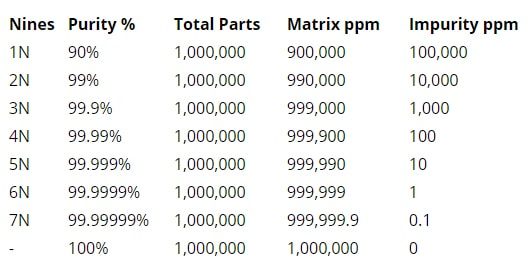
A very common feature touted in copper audio cables is the use of Oxygen-Free Copper (OFC) that has been refined to reduce the level of oxygen in the copper to 0.001% or below. C10100 copper, a special variant, is a highly refined (and very expensive) copper that is sometimes used in premium audio cables. It has the ability to remove any silver impurities and reduce the oxygen to 0.0005%. However, it yields only a one percent higher conductivity than standard OFC. This is often a topic of debate – if oxygen content or impurity removal is in any way audible.
Metal Colors and Its Impact on Sound
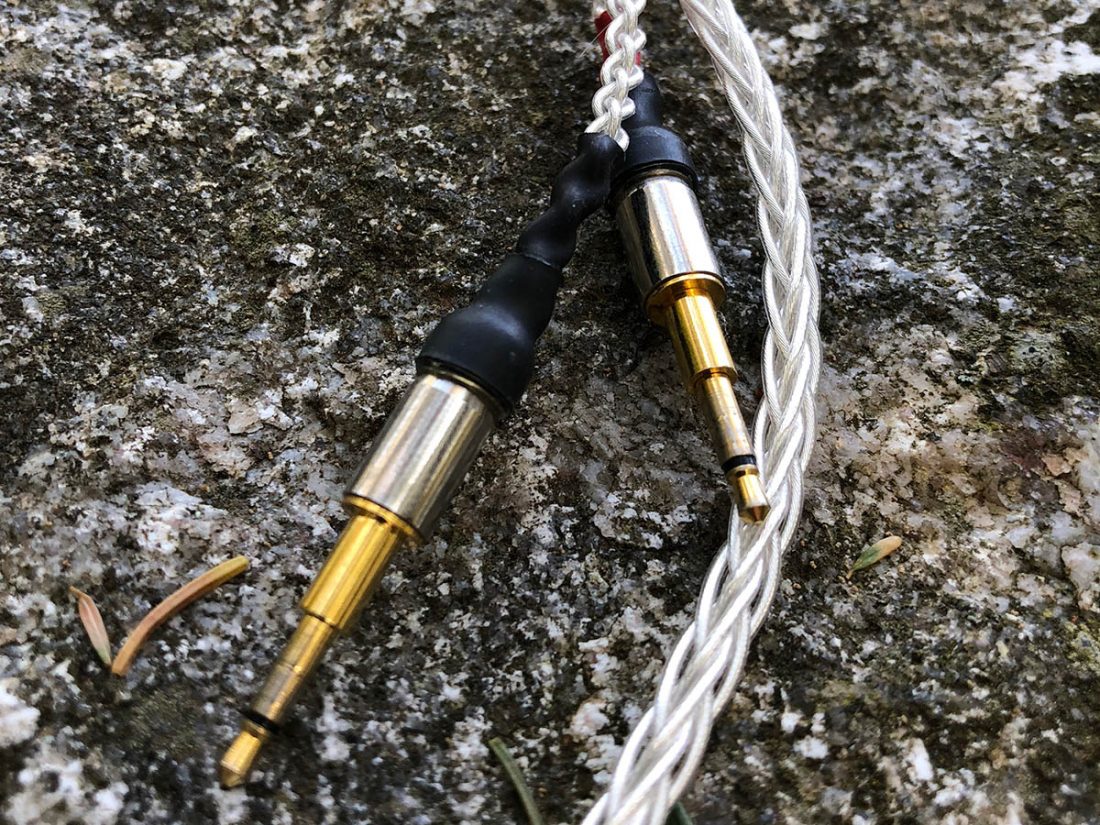
I would be remiss to not comment on the typical descriptive terms applied to the materials used in cables and connectors. A quick search on popular audio forums will turn up descriptions like:
Note that that rhodium and silver are associated with terms like bright and shiny, while copper and gold are described as having earthy and warm color. Often, the brighter materials are equated with a brighter sound, whereas the warmer colored materials with a warmer sound. Is this a case of our eyes influencing our expectations or is it because of the sound differences long understood between brass instruments?
From thetrumpetblog.com:
Is it a coincidence that the tonal qualities of instruments are also linked to wires of the same color and finish? It certainly seems like there may be expectation bias at play.
Chapter 5: DIY Headphone Cables
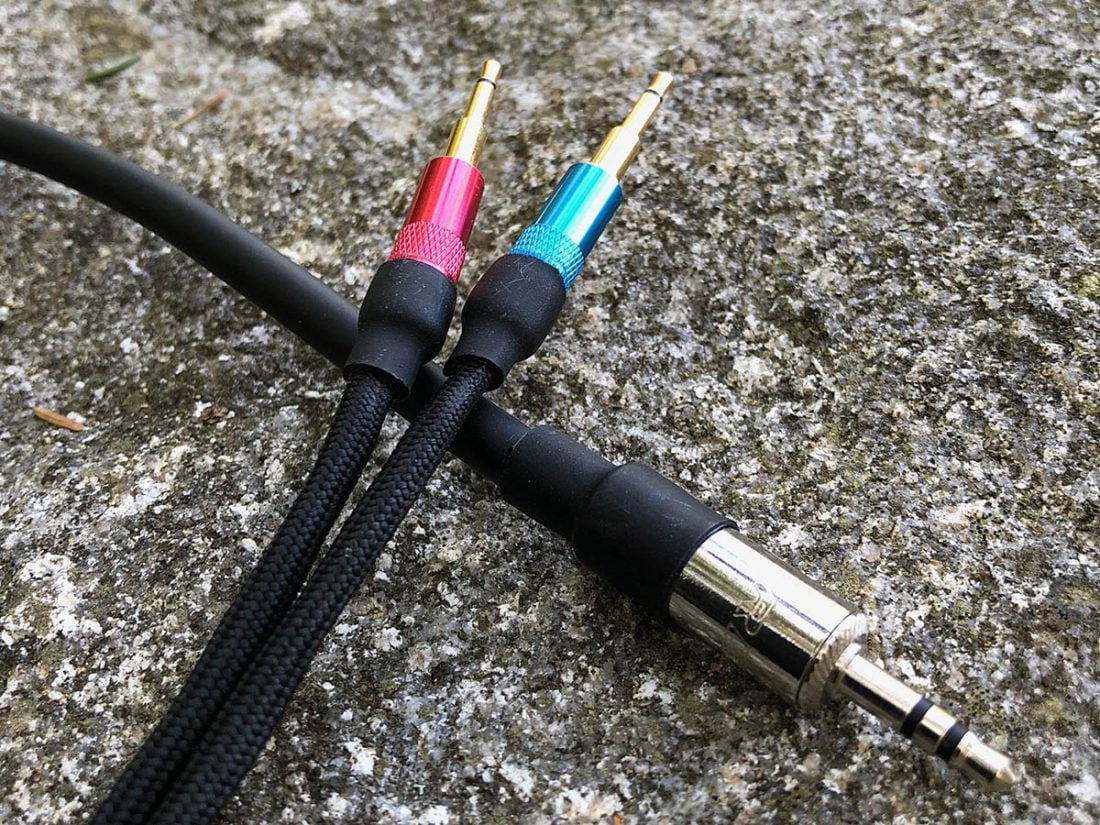
As aftermarket cables can be expensive, curious and capable folks often would go the Do-It-Yourself (DIY) route. If you are competent with a soldering iron, creating custom headphone cables yourself can be a fairly easy and fun project. It also lets you try out high-end materials at a fraction of the cost of a commercial option. Want to see if you can hear a difference in cables, but not willing to spend big bucks? DIY is a great solution.
One of the most cost effective methods of getting high-quality copper wire perfect for headphone cable construction is from 4-wire microphone cables from Mogami or Canare. I tend to use Mogami 2534 for my builds as it is high-quality, easy to use, and readily available in bulk.
Types of Cable Braids
Perhaps the most individual aspect of building headphone cables is creating the braid for the wires. The braid serves to contain the individual wires, minimizes interference and creates an attractive end product. A well-done braid elevates DIY headphone cables to professional works of art. The Ultimate Cable-Braid Resource details the most common types of braided headphone cables.
Chapter 6: Cable Science
Regardless of the type of cable, a cable length has a linear relationship with the resistance on the audio signal. Measurable differences between cables approach zero as the wire gets shorter. A perfect wire would have no measurable resistance, inductance or capacitance. In general, minimizing these three properties, and their impact on impeding the flow of electrons, is the goal of proper cable design.
Ironically, using extremely short headphone cables is seldom suggested as an audio upgrade opportunity.
As long as the cable is functioning properly and can transmit the signal, the science basically boils down to resistance, capacitance and impedance in the wire (and perhaps within the terminations). Resistance in a wire results in loss of all frequencies while inductance causes losses that are proportional to the frequency. Increasing capacitance enough in relation to the damping factor can cause high frequencies to be rolled off.
Skin Effect
The Skin Effect of a conductor describes a phenomenon of propagation in a wire, originally published in 1985 by Professor Malcolm Omar Hawksfort Ph.D, which states that there is an optimal conductor diameter for audio transmission in cables. He found that different frequencies move through the copper wire at different speeds (higher frequency signals travel through the wire faster than lower frequencies).
This was inaudible when listening to steady frequency tones, however had a greater significance when stereo listening. The proposed solution was fairly easy; use sufficiently thin conductors (18-24 AWG wire per strand). In addition, he noted that the dielectric insulator surrounding the wire conducts the majority of the electrical signal. The details and calculations were covered in depth by Stereophile in their “The Essex Echo 1995: Electrical Signal Propagation & Cable Theory” article.
Cable Break In
Uh, oh. Another controversial topic here. The high-end cable companies almost always recommend break in, or a minimum usage time (typically many hours) before the cable sounds or performs at its best.
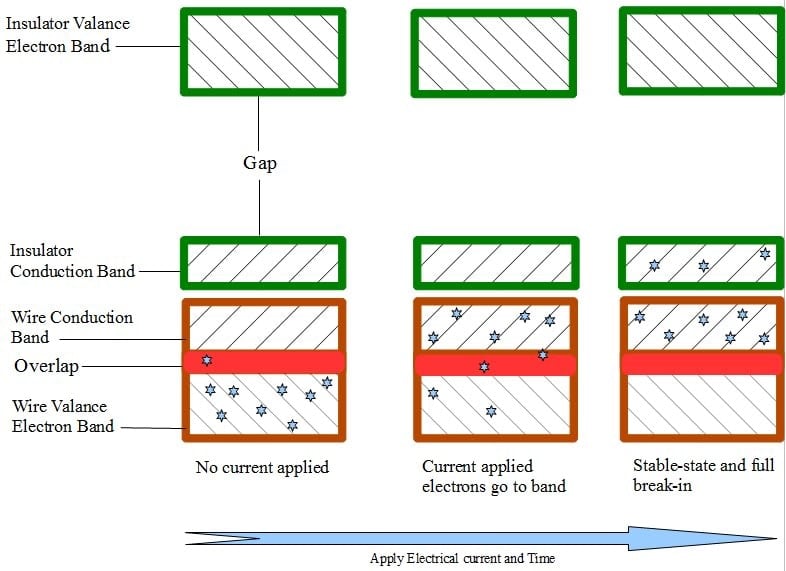
From Nordost:
From Cardas:
From Audioquest:
So the concept of break in is to improve the impact to the sound of the dielectric insulator, rather than the wires in the cable.
Unfortunately there isn’t any accepted published test results that show if these improvements are audible or measurable. Further compounding the issue, the benefits will be undone without regular use.
The Skeptic may feel that the recommended long break in process is simply a marketing ploy to get the purchaser to keep the cables beyond the return period. Since the break in process is so gradual and subtle, the purchaser becomes habituated. Hence, they may perceive a slow and steady improvement over time, even if there wasn’t an initial perceived improvement in sound quality.
Cryogenic Cable Treatment
If waiting hundreds of hours for a cable’s dielectric to become properly ready to transmit audio seems a bit far-fetched, the process of cryogenically treating cables may be too much for you. It typically consists of applying liquid nitrogen vapor to chill the cable to about -300 degrees Fahrenheit. This is done over many hours (or days) and the cable is slowly allowed to return to room temperature.
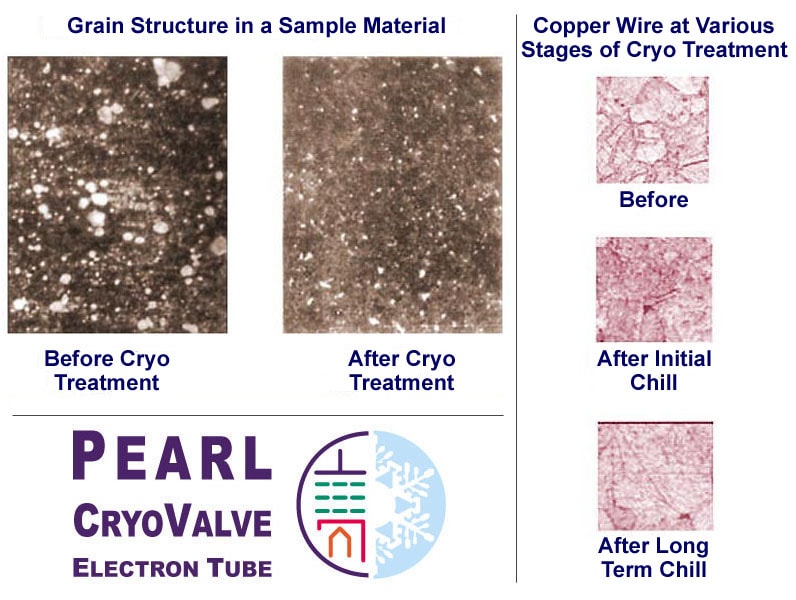
The theory behind cryogenic treatment is that when the temperature is set below -300 F, molecular changes would occur in metals. This would then increase the conductivity of the cable. The ‘grain structure’ of the molecules becomes permanently tighter and more uniform, reportedly reducing noise and improving electron flow.
According to Take Five Audio, “the most commonly noted improvements are:
- Deeper, wider, more three dimensional soundstage
- More articulate bass reproduction
- Smoother, more refined high frequency response
- Improved dynamic range
- Lower noise floor”
Again, it is difficult to measure the audio improvements of this process and results are anecdotal.
Chapter 7: Manufacturer Claims
“It’s easier to fool people than to convince them that they have been fooled.”
– Mark Twain
It’s tough to wrap one’s head around techniques such as cable break in or cryogenic treatment and not be feeling a little heavy on promised improvements and a tad light on proof. Are they science, pseudo-science, or just marketing claims? What’s the advantage for a manufacturer to make these sorts of technical claims?
Ok. Sure? Skin effect is a thing, so maybe that would work?
Whew. I guess so?
There’s the rub; who’s to say that those advertising claims aren’t valid science? They are based on real things like skin effect, and certainly, there are many enthusiasts who swear they hear the promised improvements. The companies have the knowledge, tools and equipment to test their designs. Just because something appears too good (or complicated) to be true, doesn’t absolutely mean it isn’t.
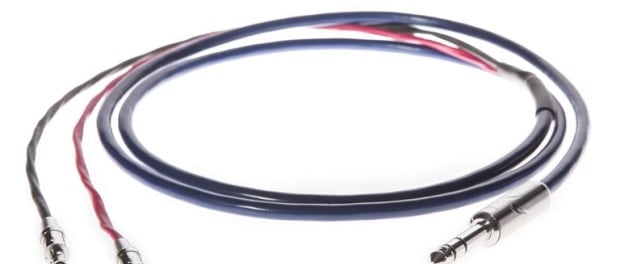
Conclusion
In my experience, if high-end cables make a difference, it is very, very slight. I likely don’t have the trained ears, or exotic enough equipment to be able to perceive significant sound changes due to cable replacement. Perhaps my biases just lead me to believe that.
In the end, I think of them as a potential type of fixed hardware equalizer (EQ) (like a vacuum tube in an amplifier), a very subtle EQ that cannot be adjusted but only replaced.
Perhaps the debate should be changed to ‘is it justifiable to upgrade cables?’ This changes it into a personal question. One that you can ask yourself. This divorces the debate from the polarized viewpoints of others and focuses on the value a headphone cable replacement can bring to the individual.
The Value of Pleasure
Headphone cable discussions must also include the value of aesthetics. Beautiful cables are like jewellery. Even if they don’t meaningfully impact the sound, they can certainly increase user satisfaction and enjoyment of their headphones.
From the Testing Audiophile Claims and Myths thread on Head-fi.org: “After failing a blind test, one hifi buff, no less the editor of Stereophile said:
The author of the article goes on to say;
If the replacement cable increases the listener’s pleasure, the cost to upgrade becomes far more justifiable. Just approach cable replacement as a tweak. Best case, it should provide improved aesthetics, durability and construction as well as a subtle sound improvement. All audio tweaks should be a small percentage of the cost of the major components of the stereo chain, where the most dramatic changes and improvements to the quality of sound will come from replacing the headphones themselves.
It behooves the audio enthusiast to keep an open mind, and to accept that the possibility exists – that we may be missing something that someone else can perceive. Or to simply try not to take things too personally and be open to learning from the other enthusiasts that share your passion for audio. If other’s decisions give them pleasure, (and pleasure is what hobbies are all about) then far be it from me to rain on anyone’s parade.
There is nothing more disheartening or boring than stumbling into a cable debate that has devolved into a spiral of name-calling self-righteousness. This debate has literally been around for decades, and certainly isn’t bringing pleasure to any of the participants. It’s all for the fun and love of music. We must try to remember that!

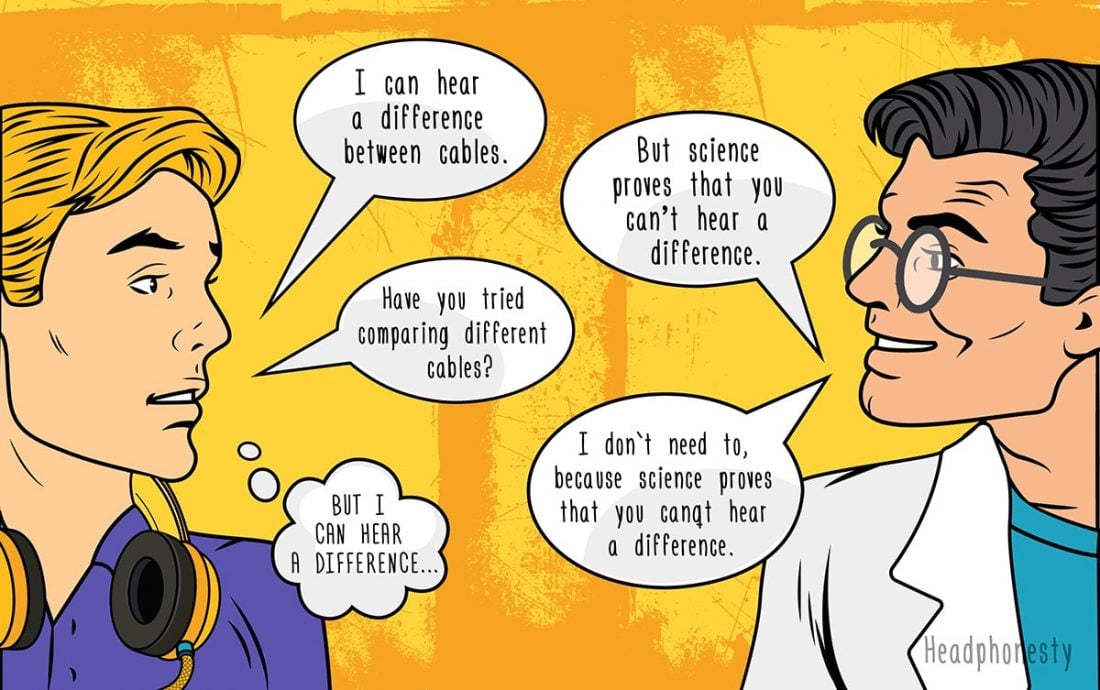
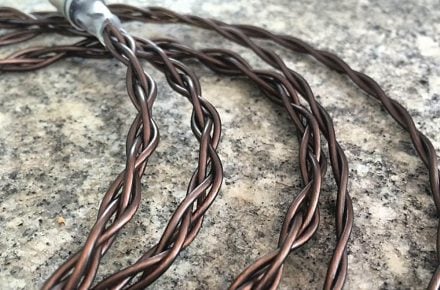
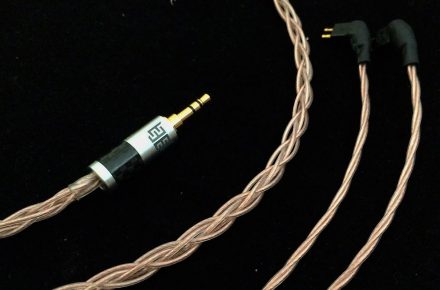
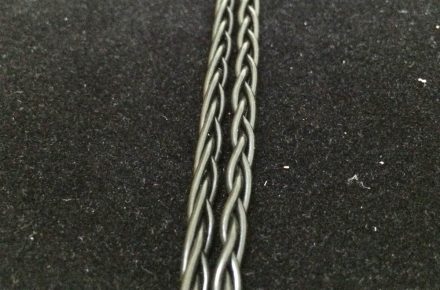
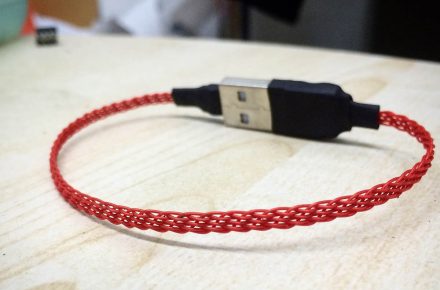
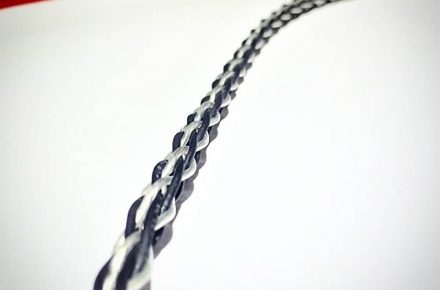
I hear differences in cables but that’s only because they were so thin and badly constructed and prone to all kinds of faluire that a cable that works properly sounds like a big improvement . I wonder why this is such an issue with headphone cables?
Beautifully written and constructed article. Thank you. With practiced critical listening I am starting to notice the smaller and smaller quanta of differences when I tweak the chain, but focusing on this undoubtedly changes the point, and degrades pleasure, of a listening session. For me, spending reasonable money, and time in dilligent research, on decent cables etc removes the nagging anxiety that I might miss out if I didn’t, and allows me surprise and delight when I ( believe I) can hear a difference.
Also, to the naysayers demanding “science”, do they know that the current start-of-the- art physics equations tell us there are at least 13 dimensions, and multiple versions of the universe, and thus, very likely, our reality. How crazy is that? (Skin effect, RFIs etc are surely much easier to accept and appreciate for their deleterious effects, if only in principle). And I, as a medical professional, am supposed to dis something like homeopathy, for instance, because other members of my herd have trouble moving beyond basic macro-level math? Sheesh….there are more things under heaven and earth, Horatio….
Hey. Thanks for the kind words. Nothing seems to get audio enthusiasts more worked up than arguments about cables. Just recently, some of the online communities I frequent have been inundated with scathing comments from a self-professed Skeptic. Others can’t help but wade into the fight and around and around it all goes again. It really takes a lot of the fun out of this great hobby.
Yes, but to the sceptics, it IS the fun! They see the others as religious nuts, deluded and hallucinating, deserving to have their pot stirred for their stupidity and gullibility. And yet THEY are the fundamentalists, blinkered and closed to even the possibility of “what if…”, of wondering if they might hear what lies beyond. Even if the (cloth-eared) rationalists do offer to “believe it when they hear it”, academic psychology is very clear we do it the other way round. ie if new evidence appears to contradict a closely held belief, our dinosaur brain makes us feel anxious in case a new (changed) behavior exposes us to some new danger. And not only that, we get given a squirt of reward hormone, dopamine, if we actively reject the new information! We really haven’t come out of the jungle at all much, hence the state of the world. Keep up the great work, a balanced and informative site.
Replacing the stock cables on my Senn 600s and HiFiMan 400i’s with Periapt cables brought noticeable improvements. I don’t listen to them anymore because of my Grado 1000s stellar performance with its very own stock cable. Perhaps the same could be said of Focal Utopias – but I don’t own a pair, and why should I? Very satisfied with my Grados.
That was incredible explaination, but sorry, iam not that smart enough to understand though. could you please advice how to make a perfect strong earphone wire, the size of copper wire thickness and how many strands required for a good earphone. Thank you very much.
Hi. I think perhaps that the point is to not feel too sure after considering all the options! There is no perfect (or right) answer to your question. Budget, purpose, etc all come into play. If someone actually knew the “perfect” wire, we’d all agree and do it that way! 🙂
My best advice is to try different builds and figure out what is ‘true for you’. 🙂
IMHO the perfect cable is “neutral” neither adding nor subtracting from the music as it was mastered in the recording studio.
That was a very fun read. Thank you.
Glad you enjoyed it!
Using skin effect calculator online, the skin effect depth is 0.461mm for 20khz freq. That means you can use a 0.922mm diameter single strand copper cable without worrying about skin effect. That’s up to a no.19 awg solid copper cable. And most audiophool use stranded litz wire to mitigate skin effect? Most headphone cables are no.24 awg which blows skin effect out of the picture. Lol! I’d be more concerned with the wire’s resistance per lenght. Rofl!
I recently became aware of a psychological phenomenon which I think may apply to audio “fidelity.”
My wife grew up in a different country and thus used a different language with different sounds, etc. During a conversation I mentioned the word “pup” and “pop.” She asked me why I repeated myself. I told her I did not. I said the two words again and she couldn’t hear a difference. My daughter, listening in, said she could hear the difference and couldn’t understand why her mother could not. Upon analyzation, it seems during my wife’s growth, she was never exposed to the vowel sounds from “pup” and “pop.” Her brain translates those two sounds as one.
Is it then possible, that the differences in sound quality between one cable to another, is dependent upon exposure to heightened or extended sets of soundwaves during a particular point of growth? It could be possible that “Skeptics” simply aren’t able to hear the frequencies because the brain simply lumps any nuance in sound together as one?
You bring up a good point. There are lots of sounds that we are trained to hear or not based on the languages we speak. Here’s an interesting article on it that I found when looking up the phenomenon.
https://theweek.com/articles/569137/subtle-sounds-that-english-speakers-have-trouble-catching
I think there will always be a subjective vs objective audience when it comes to these issues. In most cases how you “feel” about something typically wins you over. I ran across this article looking to replace cables for my Philips Fidelio x2’s because it’s just too long. I didn’t want anything super expensive just something that was a little above some $3 cables lol. The search has turned into a deep dive.
In my humble opinion in regards to a great listening experience, many little things must add up.
This is a well written article but from a engineering point of view there are a few things missing.
Capacitance
Every part of a system has a resistive and capacitive element. Combined they make a filter. Cables are no exception.
Noise
Cable construction can cancel out common noise and reject external noise. This is accomplished via the wire twist and shielding. The diagram shown is not a good way to construct a cable. Twisting the left and right channels will create crosstalk. Better to twist each separately with a ground and shield each separately.
Materials
Silver, Gold, and copper all have different conductive properties.
And one correction
The skin affect is a marketing ploy when applied to the audio spectrum. It has no effect on the audio spectrum. Beldin wrote a wonderful paper on this.
A $50 Periapt cable beat the pants off the stock cable on my HiFi-Man 400i. Ditto my Sennheiser 600’s cable. Moral of the story: You don’t have to spend a lot to get a whole lot more.
waiting for my periapt cables after my sundara cable simple broke, right wire gives static and cuts out. i thought i had a busted headphone until i flipped the L R and noticed the other one was now doing it. They have the audacity to charge 120$ for that cable. 1 year of use and its dead. My old seenheiser lasted 13 years and the cable was never an issue.
“Smoother, more refined high frequency response”
COOL! Show me some frequency response graphs then.
As noted, those are Take Five Audio’s claims. I did my best to dispassionately present both sides of the debate. A lack of ‘scientific proof’ is a very common concern.
“According to Take Five Audio, “the most commonly noted improvements are:
Deeper, wider, more three dimensional soundstage
More articulate bass reproduction
Smoother, more refined high frequency response
Improved dynamic range
Lower noise floor””
What an odd world where the person who relies on the scientifically proven conclusion is called “the skeptic”.
This is, hands-down, the best article I’ve read on this debate, and I’ve read a lot. Thank you for writing such a well-balanced and informative article. Personally, I don’t know where I stand on the issue – I want the cables to make a difference. I like the idea of upgrading and trying to find the exact right combination to improve the sound within my system. I also love the aesthetics. So, I think I will continue to purchase upgraded cables (within my budget) because I enjoy doing so – even if I likely can’t “hear” the differences.
Cheers! Thanks for the kind words. Sounds like you and I share similar philosophies on the topic! 🙂
I’m confused about directionality of cable. We’re talking about audio signals which are alternating current. If the signal is swinging from positive to negative (resulting in movement of the diaphragm to both sides of the stationary position, not just one side), doesn’t the current always flow in both directions down the cable?
Hey! I’m 82 years old and have loved my music for a very long time. I am convinced that all I really care about is the bass booming in my head and a little tinkling of the other instruments. I use good cheap headphones “Monoprice” for this and “Ugreen” cables and that makes me a happy old man without good sense. I really don’t think it makes that much difference as long as you stick with a name brand..
Works for me but whata I know?
I stumbled across the article and actually appreciate you taking a balanced approach on the subject. I’ve actually stopped reading sites like DARko because he did an about face on being “open minded” about cables and appeared to become a PR clearing house for manufacturers to promote new cables.
I personally own $600 some odd dollars in aftermarket cables… tethered to $10K in audio equipment, including an aftermarket cable for my HD800 and even though there are a fair number of “professional” reviewers who claim a recable is vital to getting the best performance out of the HD800…. I’ve never really been able to tell much of any difference with any of my cables.
I’m not saying that there aren’t differences…. but I’ve listened through enough different stock and high end cables, hell I’ve A/B’d enough DACs and digital front ends, and tube amps vs. sand amps to know the deltas are very, very small if perceptible at all.
Speakers and headphones are where most of the difference lie. The lion share of what is left is in the amp/ gain devices. Beyond that, things like DACs, and Digital Signal Converters, Transports and Cables all operate in this near imperceptible zone. And I think the shifts that take place in this arena are rarely forwards and backwards… I tend to think they are more sideways tilts toward or away from warmth vs. speed etc…
My big pet peeve is I feel reviewers need to modulate their language when they describe things like DACS and Cables and the like. They lose credibility with me when they use dynamic or hyperbolic language for differences that are on the cusp of being perceptible.
I upgraded the cables on my Sennheiser HD700s with Corpse Cable Gravediggers at some ungodly sum. They definitely sound as good as the originals. They are way cooler to look at. They’re the perfect length for desktop listening. And the feel is incredible. Those three qualities in no way justify the price unless you’re like me and just want the fit and finish and feel to be perfect. So perfect that I splurged and bought the same ones for my HD800S, too!
I hear the improvement of sound on my earphone by using better cable because I believe the stock cable is not conductive enough for 1.2 meter. Also there are supercheap chifi that sound better after recable. What I believe is cable is just an inductor if you reach an adequate electric conductivity for given lenght the better the cable maybe overkill and just wasting money.
I’m surprised that conductivity of a piece of copper becomes an issue at such a short length. Engineers run lengths of many feet of mic cable, which is usually around 24awg copper, and it doesn’t really become a problem until you are getting into the hundreds of feet. Headphone cables should be larger wire and the signal is much higher level. 100′ is definitely a problem, but under 6′ should be fine.
Or are you using different materials than copper?
Great article. Had much of fun reading this:)
While reading i enjoyed ja new Focal Stellia. Sounds so great and when closed eyes you don t see cables ans expensive looking gear, just music:)
Really interesting to read, but as expected, inconclusive 🙂
All I can say is that I’m a serial modifier of things, so now I’m into higher end audio, I am turning my focus to improvements. I have had a few experiences with aftermarket cables and headphones that in some cases make me a skeptic and then also a believer.
One example was my old Obravo EAMT1-C earphones, at one time the most expensive earphone in the world…I wanted them to have more warmth as I found it lacking (having come from JH Audi Angies), so I tried several expensive cables and initially I’d be like ‘oh yes, improvement’ but then I’d plug in the stock balanced cable and be like ‘oh this sounds way better’.
So maybe that was the fault of the aftermarket cables and the fact the OEM cable was simply superior! Skeptic.
Then I bought an EA Lionheart cable for my Layla2 earphones, stating to EA that I wanted a bit more soundstage and warmth equal to 2pm on the bass pots on the stock cable. The Lionheart definitely changed the sound for me and has more of a bass bias (almost too much). Maybe you could say that is nothing to do with the cable change and only to do with the removal of the bass pots ‘gate’ to the signal?
Who knows…
Nicely written. I appreciate your charity towards all perspectives about a subject complicated further by false claims of manufacturers trying to sell products.
Like most people who are into audiophile equipment, I’ve heard the “golden” vs “lead” ear arguments many times. After over 50 years of trying various wires I know I can hear a difference in how wires conduct signals. I am also convinced there are people who do not hear differences. Why?
In my daily life I often run across people who don’t notice much of anything subtle, and so when they listen to music or taste food or judge the image quality of a lens always seem to need aspects like bass and etchy highs, spices and salt, ultra-sharpness etc. strongly accentuated before they notice. If I refer them to the subtleties of a Sylvania 5751 tube or MIT Shotgun cables, or natural flavors, or micro contrast in a lens . . . they fail to see what the fuss is about, whereas for me the subtlest of qualities are the best part of high-end anything.
My current opinion is that golden-lead ear arguments arise (leaving egos out of it) from people honestly reporting their experiences, but which differ because of how they perceive and because of the resulting listening priorities they’ve developed. Such arguments are futile since they are usually are between people disagreeing about what’s been perceived rather than what’s possible to perceive.
In general, people’s ears become more golden with the amount of money they have paid for things that have no objective bearing on the sound. People will wax poetic about their thousand dollar speaker cables and the hundreds they spent on the little wooden blocks that keep them off the floor but will quickly get quiet if you suggest a double blind test. When it comes to cables, if you have a decent cable made out good quality copper and it has no functional defects, it will work just fine and it appears that people cannot tell the difference in a double blind test.
That said, I got a piece of Cardas cable that I wired up for use with my electric bass. I went to a gig and used my previous regular cable and spent the whole first set messing with my settings. It just seemed wrong. Then I got out the Cardas and it all fell into place. I never would have believed it.
I came across your article because I am on the market for a new high end headphones. Because I dabble in electronics a little, I am thinking about making headphone cables. And I thought that maybe pure silver would be a good option. Because if I did it myself, I could use high grade materials and not pay a whole lot for the final product. I noticed you made your own silver cable. Can you tell us where you for the wire and the process a little?
I consider myself a skeptic and try to avoid bias as much as possible. I want to improve the performance of my sistem as much as possible while avoiding fraudulent products. I was very reluctant to the claim that cables can make a difference so I made a test where I compared some cheap power cables with some more expensive onse (40 usd vs 1000 usd). Cable length was the same 2m. The rest of the gear was high end, and nothing was changed (including the volume).
Depite my expectations of not perceiving any difference, I was astounded by the palpable difference. And it was a clear improvement, which I would describe as a more revealing sound, with specific tunes, such as guitar slides, being clearer. There was even a slight difference in volume, although we did not use a microphone to verify.
I really enjoyed reading this article but one thing I miss here. The aging of the cable due to oxydizing. The combination of electricity, oxygen and water that is everywhere in the environment makes oxydizing a real pain in the ace. Just look at cheap speaker cables after a period of time. The copper gets black and brittle even inside the insulator.
That’s very true. My Tin HiFi T4’s cable has oxidised from a bright silver color to a dull yellow tint. Yucks
I liked your article. This is a very complicated and contentious subject. I do not normally opine on this subject unless directly asked but since you seem to be open minded I will share my 2 cents worth from my experiences. I will keep this as simple as I can. I have built hundreds of audio system related cables for component connection in the last 25 years, for systems ranging from hundreds to over $200K. On the subject of audio system cables in general, from my experience cables make a difference. Sometimes the change is good, sometimes for the worse and sometimes there is no perceivable difference. The difference can be subtle to wow. Every part of the construction of the cable from connectors, solder used, wire (gauge, purity, metals used), dielectric material, etc.) The caveats are:
* System or components in the system/chain has to be resolving enough to make use of the cable change. For an example if one is to replace a cable on a $400 pair of headphones and the amp and DAC combined are $200, the cable change will be minimal. The Amp and DAC are likely not resolving enough.
* You have at least what most consider normal human hearing capabilities. If you are unable to hear certain frequency ranges well then obviously you likely will not hear the changes a cable may make.
I cannot tell you how many times I have heard or read that cable burn-in is placebo, cables do not matter except in your head and so on. Show me the graph they say. This type of rhetoric just tells me they have not experienced the difference, or see caveats I listed above. I just love to experiment and for me it is simple, Is there a sonic difference? What caused the difference? Do I like the difference? And so on. For 25+ years I did this. Ever use a new pure silver conductor cable (anywhere in a system)? Almost all silver cables sound thin and peaky in the HF when new. They can also sound off (PRAT). After 200 hours of burn-in these same cables sound totally different.
Here is something that will get some people’s eyes rolling or burst out in laughter. Even the solder used will change the sonic signature of a cable. If I made three identical cables, used Cardas Quad Eutectic on one cable, WBT silver solder on another and Kester 60/40 on the last, these three cables will effect what you hear from the component or headphone in this case. The differences are subtle but are noticeable enough I can tell the difference in a blind A/B.
So why do audiophile’s care about cables?
System (as a whole) tuning and synergy. By this I mean how they perceive or feel about what they hear. Cables can be used to add a little HF extension and detail retrieval when paired with overly warm gear like tube gear or dark headphones like Audeze cans. Cables can lower noise floor (allowing one to hear more of what is being veiled). Cables can also effect the system to sound more lush (almost tubey like). Everyone hears differently and has personal tastes or preferences. Cables are one way to help realize the maximum potential from their gear.
Cable prices can be ridiculously high because of the materials used. Usually not worth the price of admission, sometimes they are. I would recommend for anyone that wants to improve or tweak their audio setup and can afford to experiment with cabling do so. Oh, with cabling there is diminishing returns as with all audio gear. Sometimes if the upgrade itch presents itself it is better to upgrade gear like an amp, DAC or the headphone itself.
Here I am just looking for a decent cable that won’t give feedback and will still fit into the recessed 3.5mm connector on the sony headset that I use, and I find this… Oh well, it was a fun read and an interesting topic. Good writing!
in conclusion: if you don’t have high level equipment (electronics, speakers), don’t spend too much on cables, you won’t really see a difference and you won’t be able to judge if it’s better or not. On the other hand, if you have high-end electronics, then go for it according to your means. The fools who say they can’t hear a difference based on science alone are either deaf or acting in bad faith. If you don’t have an ear, then too bad for you and take up gardening.
My moon cable was defective so I sent it back. Moon refuses to honor its warranty. It seems to me that they may have mixed up their various returned cables, because they can’t even acknoweldge that there is a problem with the cable the I sent back to them … and are acting very arrogant about how they know best. This is unacceptable!
Did they return the cable to you?
no they did not.
I have a somewhat limited experience of high end gear (I own 1More Triple Driver Cans, ATHM50’s, and currently use a Schiit Heresy headphone amp) but I’ve always been very skeptical of wundercables and the people that pay for them. I mean, the electronics producing the sounds themselves likely don’t have wunder materials within. Capacitors don’t have gold contacts, nor mosfets or amplification chips. I realize the traces in the circuit boards are likely gold. One would think that precision measuring equipment should be able to analyze signals for thousands, even millions of variations in waveform, amplitude, and voltage between cables. I’d place more faith in that than a subjective listener, however it is difficult to say just what variations affect what sounds, how they do, and why. A poor quality cable surely would affect the sound, but a high quality cable vs. an uber one? I have my doubts. If someone out there really can tell the difference in a blind test, that would be interesting to me, but if they can’t…then I believe perception has taken over. I think that the expense can be justified based on the context, but for me I don’t think it can.
I too have the one more triple drivers and pushed on desktop by a HIFIMAN ef 400… the R2R dac makes the difference in my library listening>>> while adding that the addition of larger brainwave ear pads make for a more enjoyable listen , the cables will be hard to replace as they are almost proprietary to the headphone it self … Just a thought
For high end combos there is perceptible change (variable) in audio quality with high end cables. With entry-level its illusion. Receiving gears must have ability to accept and then deliver the improvements.
I do not judge how people spend their money. If spending on placebo makes someone happy, who am I to judge.
However, you do see many claim that the difference is easily perceptible, but if that is the case, then it should be easy to demonstrate in a controlled environment. If it can’t be done, then clearly the difference (if any) isn’t easily perceptible. There -are- people who are exceptional at perceiving things that an average person can’t – for instance a perfumer need an exceptional sense of smell, able to distinguish subtleties that an average person may not pick up – but this is a skill that can be demonstrated in a controlled environment. I am sure there are people who are also better than others at picking up difference in sound, but if cable really do affect sound, then it should be something that can be demonstrated.
Why do I think that it is important to demonstrate claims? Because there are people into the hobby who want informed recommendations about how to spend their money. They are not interested in paying for placebo, and want noticeable change / improvement in their setup. If the impact of cable isn’t real, then it could lead people to spend money on false premises and -that- is an issue.
No one can demonstrate it; it must be experienced for oneself. Like, how would it be possible demonstrate the taste of an orange to one who’d never tasted one? A: You put an orange in his mouth – and a high-end set of wires on his ‘phones.
I think you beautifully summarized the debate — in the end if one’s beliefs and choices make listening more pleasurable they are the right ones. I think both camps provide valuable points. I generally start as the skeptic, chasing the numbers to narrow down choices I have for a particular part of the chain I am interested in. I then audition to make the final decision as individual chain, set of ears, psychology, mood, music preference and subjective opinion to what constitutes good sound is so diverse only when auditioning can you feel confident in your choice. I think picking one side is the real mistake, if you chase only the numbers you leave the most important aspect of the audiophile goal, pleasing your individual set of ears, placing trust in your ears only however is an expensive and potentially psychologically colored endeavor. We need both and am thankful for the input they offer to helping me make my individual choices. If everyone could realize there is appreciable value from both positions we can clear forums littered with useless biased debate and start working towards better sounding chains.
Cheers! Thanks for the kind words. It’s too bad so much energy is spent bickering over hobbies. 😛
Ive bet thousands of dollars on a blind cable test but no skeptic ever challenges me, I wonder why? smh
Use Sony wireless and hearing aid Bluetooth. Works great. When no one is in house, I crank stereo loud.